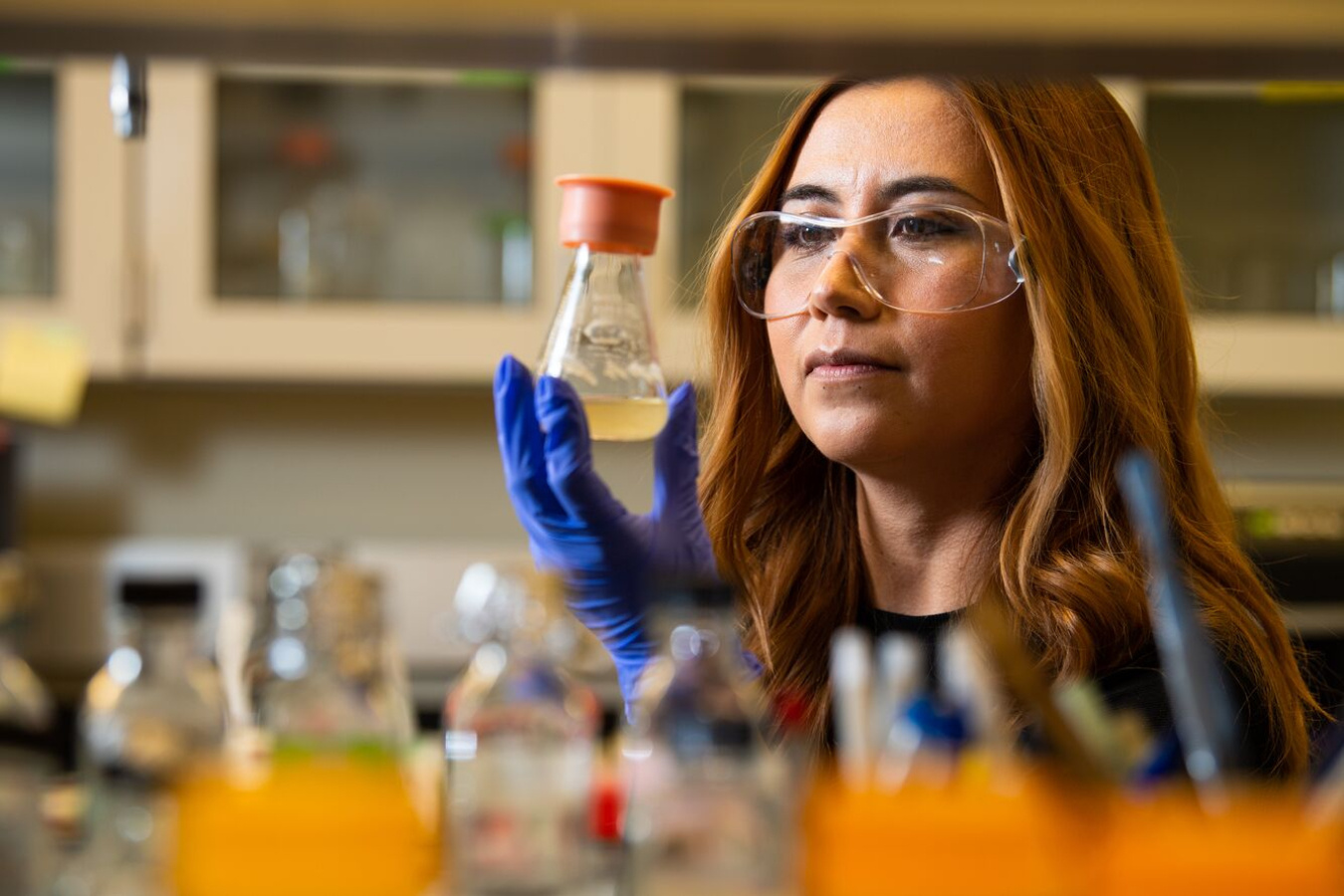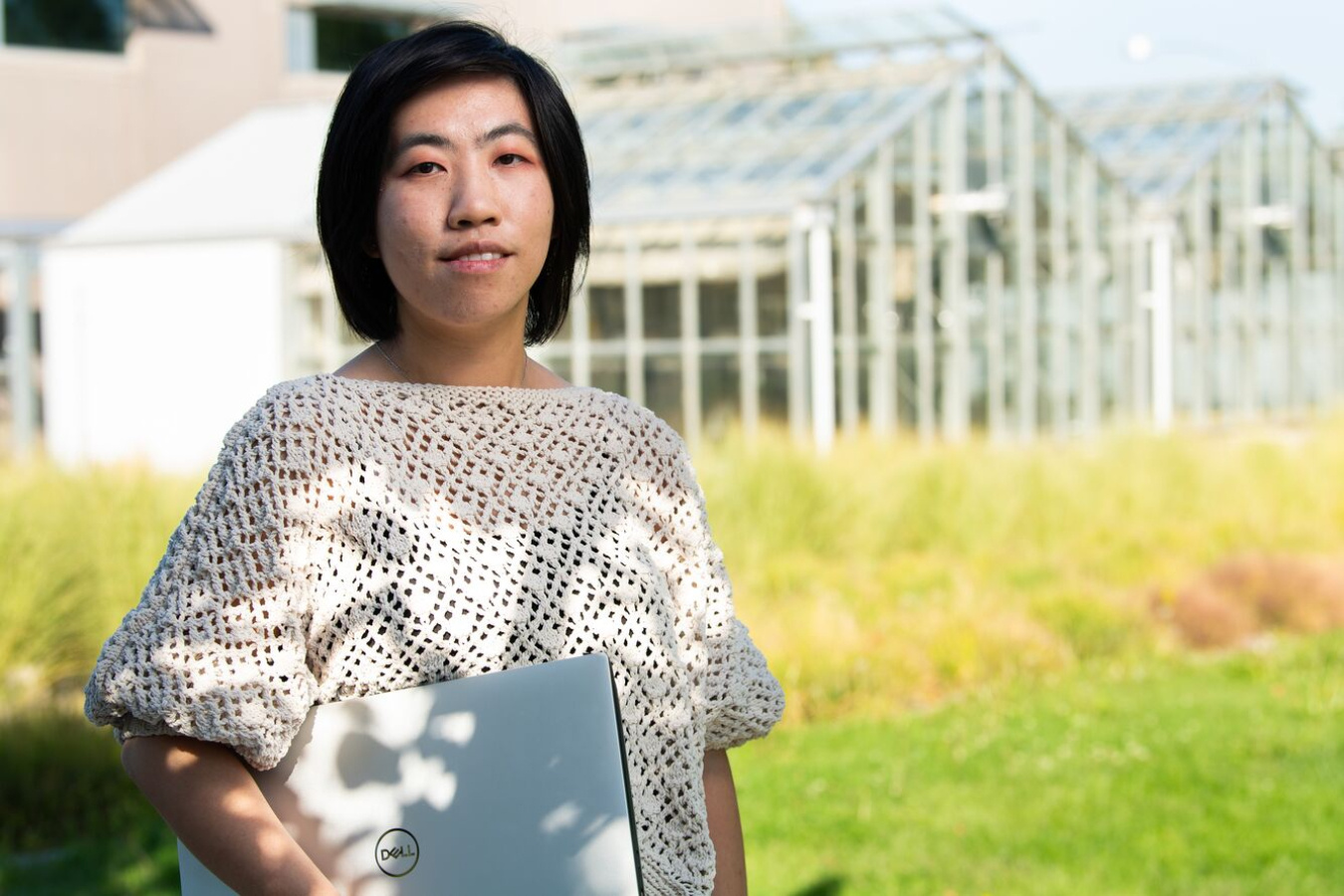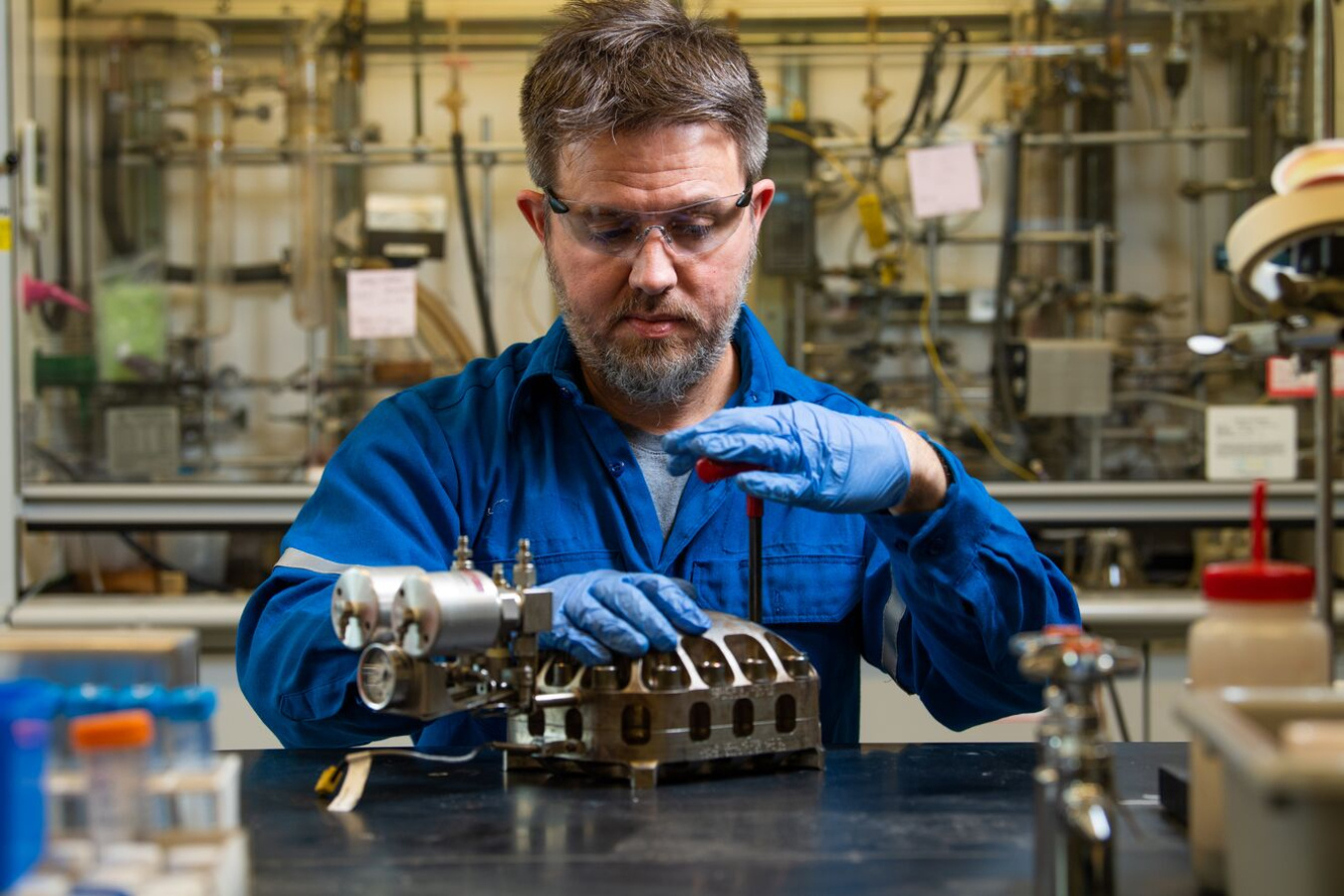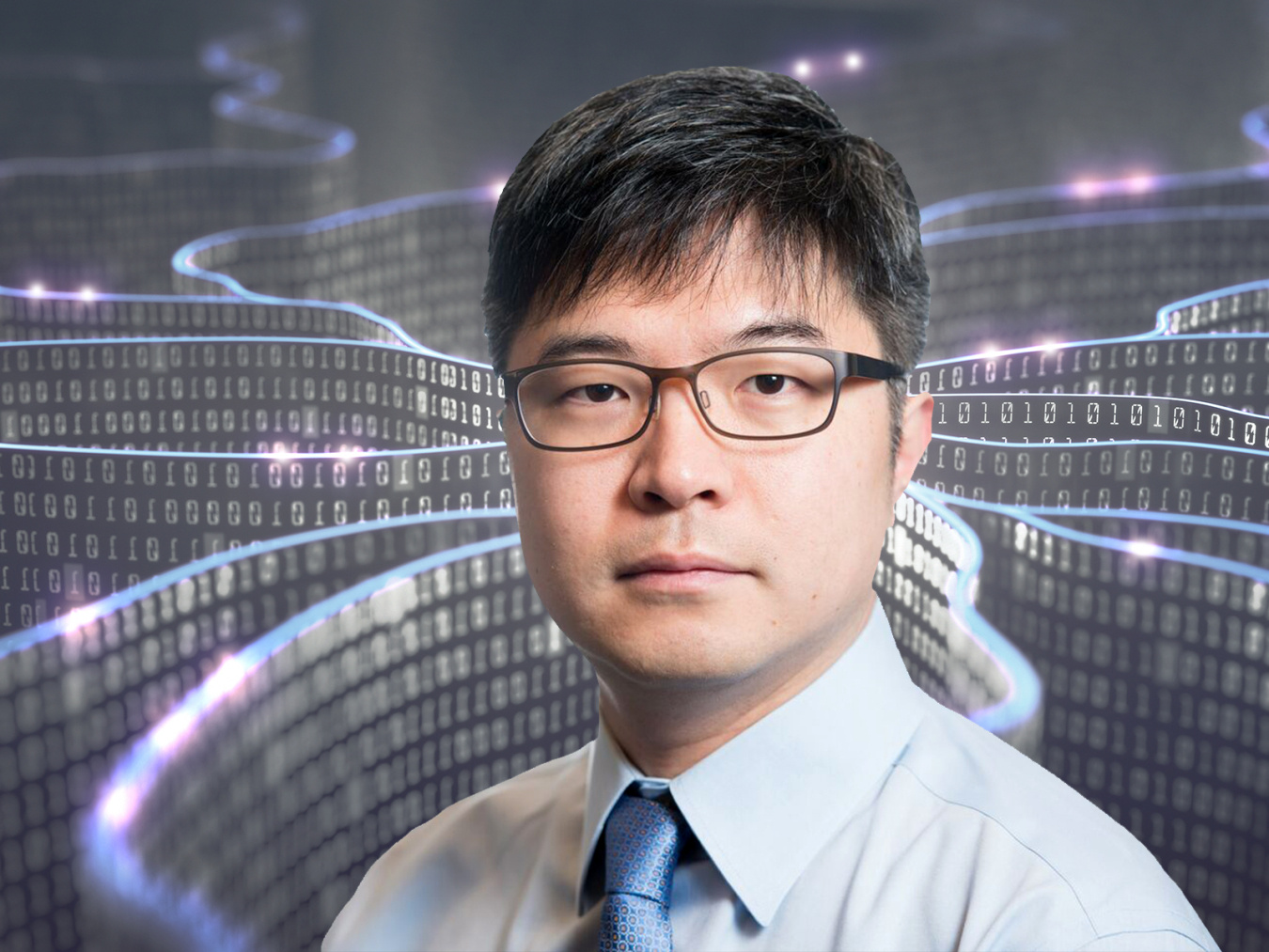
Author: Dr. Asanga Padmaperuma
Senior Research Chemist in the Energy Processes and Materials Division at Pacific Northwest National Laboratory
Meet five of Pacific Northwest National Laboratory’s bioenergy superheroes
Engineers, biologists, modelers, computational experts, and postdoctoral researchers. These are the scientific superheroes who are working to convert the undesirable—sewage, left-over food scraps, waste sludges and gases, and more—into clean, sustainable biofuels that will help achieve the missions of DOE’s Bioenergy Technologies Office (BETO).
Pacific Northwest National Laboratory (PNNL) prides itself on the diversity across its team of bioenergy experts—all who play a key role in bringing conversion processes and technologies to fruition. PNNL bioenergy experts are the faces of diversity, equity, and inclusion—banding together to solve big problems, find better solutions, and fuel innovation. Learn more about how you can contribute to advancing bioenergy with a career at PNNL.
October 20, 2021 is National Bioenergy Day. We recognize five of PNNL’s bioenergy superheroes who are making a difference in bringing biofuels to the nation’s transportation system.
Dylan Cronin, postdoctoral research associate
What’s your bioenergy superpower?
The ability to take a broad range of different types of trash—from table scraps from your favorite restaurant to cow poo from your local dairy farm—and turn it into sustainable transport fuels to power your car, as well as boats and airplanes.
What research do you do in support of DOE’s Bioenergy Technologies Office?
I am involved in wet-waste conversion research via hydrothermal liquefaction. The goal of this evolving technology is to produce sustainable transport fuels from a range of different waste biomass streams. Such materials include agricultural and forestry wastes, as well as municipal wastes like landfill and wastewater process streams. This work will not only decrease society’s dependence on depleting fossil resources, but also reduce the significant cost to municipalities of numerous waste disposal processes.
What advice do you have for someone entering the bioenergy field?
I would advise anyone interested in bioenergy research to pursue their area of personal interest, knowing that this field is not only intellectually challenging and stimulating, but of vital importance to society.
What’s your favorite bioenergy fact?
Toy dinosaurs are literally made of real dinosaurs! Crude oil is formed over millions of years as a result of biomass, such as dinosaurs and plants, being exposed to high pressure and temperature beneath the earth. Crude oil is the material from which society produces the vast majority of not only transport fuels but also plastics and synthetic chemicals. The goal of hydrothermal liquefaction is to emulate the Earth’s natural process of oil production in a matter of minutes rather than millennia.
Ana Laura Robles, biologist

Photo: Andrea Starr | Pacific Northwest National Laboratory
What’s your bioenergy superpower?
My superpower is transforming fungi so they will produce biofuels and bioproducts.
What research do you do in support of DOE’s Bioenergy Technologies Office?
I directly support and collaborate with scientists in the production, development, and transformation of fungi, mainly Aspergillus niger—a fungus that causes black mold on certain fruits and vegetables—to make valuable biofuels and biochemicals.
What advice do you have for someone entering the bioenergy field?
There are many available options for this career path. My recommendation would be to choose the area of research that you enjoy the most. I have found that learning from experienced scientists and taking opportunities that come your way will help you to move your career forward.
What’s your favorite bioenergy fact?
Wastewater can be converted into biofuels to achieve cleaner energy that will limit the amount of fossil fuels used. This will result in a reduction in harmful emissions. This is due to the research and dedication of each member of PNNL’s Biological Conversion team who works hard to make this possible.
Yuan Jiang, techno-economic modeler

Photo: Andrea Starr | Pacific Northwest National Laboratory
What’s your bioenergy superpower?
My superpower is that I’m a chemical engineer by training with expertise in conceptual design, process modeling, and techno-economic and sustainability analyses. I support several bioenergy projects where I evaluate the economic feasibility of novel technologies, identify knowledge gaps between laboratory benchtop findings and large-scale operations, and provide research guidance based on key cost and sustainability drivers identified for each bioenergy technology under development. Reliable techno-economic and sustainability analyses require knowledge across fundamental science, modeling, engineering, economics, and market as well as a spirit of innovation.
What research do you do in support of DOE’s Bioenergy Technologies Office?
Techno-economic and sustainability analyses of bioenergy technologies. BETO invests in significant research towards developing new technologies. To make the best use of funds and guide future research directions, it is important to identify cost drivers and sustainability impacts of bioenergy technologies that are of interest to BETO.
What advice do you have for someone entering the bioenergy field?
Have a big picture of bioenergy, develop skills that will benefit the bioenergy community, and be passionate about what you do.
What’s your favorite bioenergy fact?
I am excited when I go to gas stations and see the notice near each pump showing that the fuels contain ethanol and biodiesel. Bioenergy is in our daily life and keeps growing.
Uriah Kilgore, chemist

Photo: Andrea Starr | Pacific Northwest National Laboratory
What’s your bioenergy superpower?
I would say that it’s not so much a “superpower” as it is a utility belt of tools that help me contribute to a variety of bioenergy projects. From chemical synthesis to optimizing a chemical process, I try to have a tool that can allow me to help solve a problem. One of the tools that is helping me most right now is cleaning wastewater by oxidation so that our team can turn sewage sludge into fuel.
What research do you do in support of DOE’s Bioenergy Technologies Office?
I work on process chemistry for bioenergy projects. I have been fortunate enough to contribute to a few projects in the past year, including developing a process for converting ethanol to diesel fuel and another involving adding value to aqueous waste streams associated with hydrothermal liquefaction of sewage sludge.
What advice do you have for someone entering the bioenergy field?
Like with most fields, keep up with the latest developments and stay current. There are important developments being reported all the time. Read the literature, as you never know where you might find inspiration. If you didn’t specialize in the field through your college courses or training or don’t have experience, a lot of the skills you learned in other fields can probably be relevant. Make sure you understand how the training and skills you have can be transferred into the field.
What’s your favorite bioenergy fact?
Each year in the United States, more than 69 million dry metric tons/year of wet waste feedstocks are produced. If this was converted to fuel, it could produce up to 5.6 billion gallons of renewable diesel blendstock each year. This doesn’t even take into account the potential environmental benefits that come from redirecting this waste stream away from disposal – such as the energy required to dry and haul the materials to a landfill. It’s truly amazing.
Joonhoon Kim, computational biologist

Composite photo: Andrea Starr and Shannon Colson | Pacific Northwest National Laboratory
What’s your bioenergy superpower?
Computer-assisted biological manipulation. I use computational models of biological systems to design genetic modifications or augment new biological functions – such as those used to metabolize biomass and convert it into biofuels and bioproducts.
What research do you do in support of DOE’s Bioenergy Technologies Office?
I focus on developing models of microbial metabolism and applying them to improve the production of bio-based fuels and chemicals. Using these models, we can analyze different types of biological data and predict the behavior of engineered microbes that play a role in biofuel production.
What advice do you have for someone entering the bioenergy field?
Bioenergy research involves diverse disciplines including biology, chemistry, physics, engineering, and computer science. My advice is to gain broad exposure and develop interdisciplinary expertise in your choice of areas.
What’s your favorite bioenergy fact?
Biomass feedstocks for bioenergy vary widely! They include non-food crops and algae as well as various residues and wastes.


